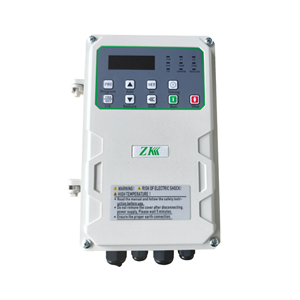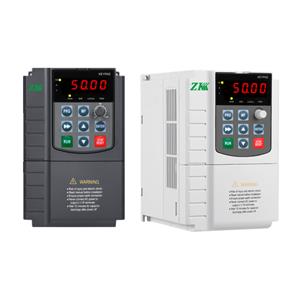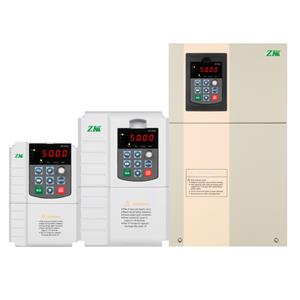The Versatile Role of Variable Frequency Inverters in Modern Industry
In an era where energy efficiency and precision control are paramount,variable frequency inverters (VFIs) have become indispensable tools across industrial sectors.These advanced devices,which regulate motor speed by adjusting electrical frequency,are revolutionizing operations in manufacturing,infrastructure, and beyond.By optimizing energy use,enhancing process control,and reducing wear on machinery,VFIs are driving both economic and environmental gains.
Energy Efficiency:A Core Advantage
Industrial motors account for nearly 70% of global electricity consumption,making energy savings a top priority.Variable frequency inverters address this challenge by dynamically matching motor speed to real-time load demands.For example,in HVAC system fans,VFIs reduce energy use by 30–50% compared to fixed-speed operation.A case study at a German automotive plant revealed annual savings of €1.2 million after retrofitting 200 pumps with VFIs.Such efficiency aligns with global initiatives like the Paris Agreement,where industries aim to cut carbon emissions by 45% by 2030.
Precision Control for Enhanced Productivity
From assembly lines to heavy machinery,variable frequency inverters enable unparalleled operational precision:
Manufacturing:In automotive production,VFIs synchronize robotic arms and conveyor belts,reducing cycle times by 15% and minimizing product defects.
Mining:Conveyor systems equipped with VFIs adjust speed based on ore volume,preventing overloads and reducing downtime.
Food Processing:Variable speed control in mixers and packaging machines ensures consistent product quality while meeting strict hygiene standards.
Extending Equipment Lifespan
Traditional fixed-speed systems subject motors to abrupt starts and stops,accelerating wear.Variable frequency inverters eliminate this issue through soft-start functionality and smooth acceleration.In water treatment plants,VFI-driven pumps experience 40% fewer maintenance incidents,as seen in Singapore’s PUB facilities.This translates to longer equipment life and reduced capital expenditure.
Sector-Success Stories
HVAC Systems:
Commercial buildings using VFIs in air handling units report 25–35% energy savings.New York’s One World Trade Center employs VFIs to dynamically adjust airflow,slashing annual energy costs by $500,000.Oil and Gas:
Offshore platforms utilize explosion-proof VFIs to control subsea pumps,improving extraction efficiency by 20% while ensuring safety in hazardous environments.Renewable Energy Integration:
Solar-powered VFIs in South African mines stabilize operations during grid outages,reducing diesel generator reliance by 60%.
Smart Technology Integration
Modern variable frequency inverters are evolving into IoT-enabled devices:
Predictive Maintenance:Sensors embedded in VFIs monitor vibration,temperature,and current,alerting technicians to potential failures before they occur.ABB’s Ability™ platform uses this data to cut unplanned downtime by 70%.
AI Optimization: Machine learning algorithms analyze historical data to auto-tune motor parameters,as demonstrated by Siemens’ Sinamics G120X series in smart factories.
Cloud Connectivity: Remote monitoring via platforms like Rockwell Automation’s FactoryTalk® allows global teams to manage VFI performance in real time.
Overcoming Industry Challenges
While adoption grows, barriers remain:
Harmonic Distortion:Advanced VFIs now integrate active filters to mitigate grid interference,complying with IEEE 519 standards.
High Initial Costs:Government incentives,such as the U.S.Inflation Reduction Act’s 30% tax credit for VFI installations, are easing financial hurdles.
Technical Training: Companies like Schneider Electric offer VR-based programs to upskill engineers in VFI programming and troubleshooting.
Global Market Outlook
The variable frequency inverter market is projected to grow at a CAGR of 6.8%,reaching $31.5 billion by 2028.Key drivers include:
Asia-Pacific Dominance:China and India lead demand,driven by urbanization and smart city projects.
European Green Deal:Strict efficiency regulations are pushing VFI adoption in EU manufacturing hubs.
Circular Economy Trends:Recyclable VFI designs,like Danfoss’s modular drives,align with sustainability goals.
Conclusion
Variable frequency inverters are no longer optional—they are critical to achieving industrial competitiveness and sustainability. By slashing energy costs,boosting productivity,and enabling smart automation,VFIs empower industries to thrive in a resource-constrained world.As technology advances, their role will only expand,solidifying their status as the backbone of modern industrial operations.




